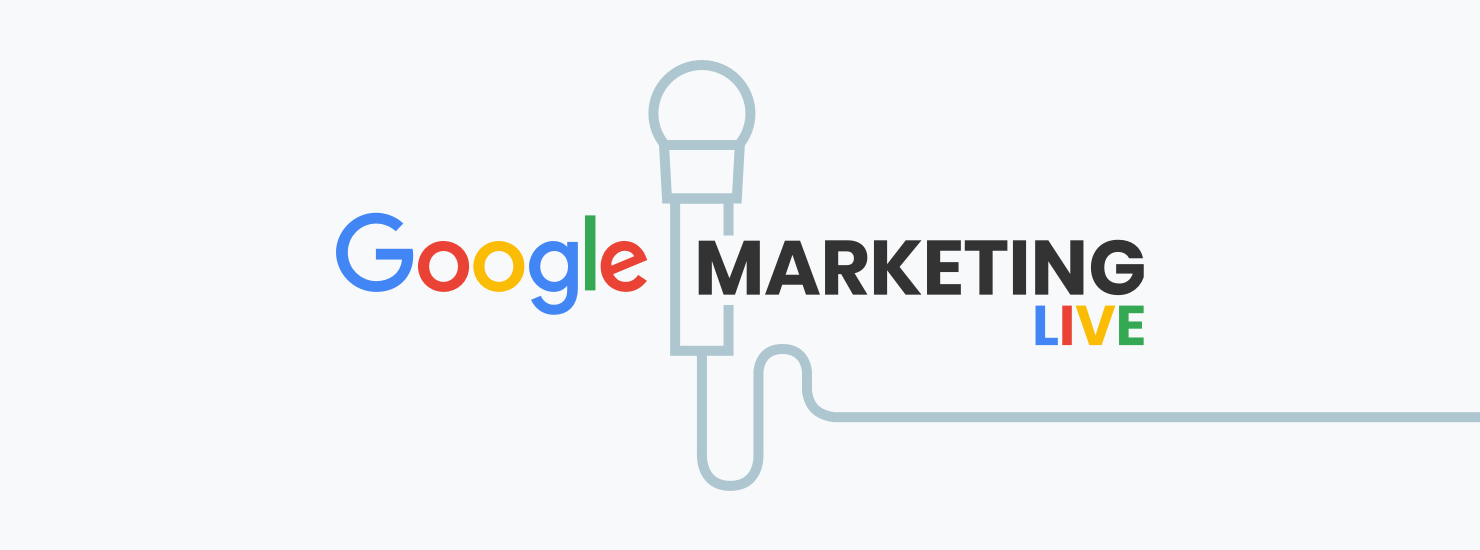Google Marketing Live is in the rear view this year, but there were a lot of great takeaways for anyone who was there, viewed the livestream, or watched the videos. Luckily for you, we’ve compiled rundown of the top new digital advertising features coming down the pike and how they can fit into a data-driven marketing strategy.
By thinking about how you can utilize the growing amount marketing tools and data available to your advantage, you too can make sure that your message is in the right medium, and break down the returns on marketing investments by channel, to improve and scale them. After all, if you don’t understand your customers and where prospects are coming from, it can be quite a challenge to replicate any good results and stay ahead of the competition. That being said, the big takeaway for this year’s event is that Google wants advertisers to have the most accurate data on their customers to be able to market to them with a laser focus.
As consumers redefine their expectations, @wittednote shares how Google can help marketers meet their needs. Watch the highlights. #GoogleMarketingLive https://t.co/mvPaR1Tewb pic.twitter.com/EGgYbqm7So
— Think with Google (@ThinkwithGoogle) May 20, 2019
Strategy first
Before running to the shiny new tools below, you’ll want to make sure you have a solid strategy in place for data integrity, data-based optimizations, and both inbound and outbound marketing. This post will be focused more on outbound marketing, as Google is an advertising-driven organization, but always remember that owned inbound channels such as email and website blog content can provide an evergreen return on investment. They’re not beholden to changes in platforms, like Facebook or Google, where one day you might find yourself distanced from your customer base, having to pay more to reach them.
So, let’s assume that you already have great analytics in place and can analyze sales pipelines by channel, and are looking for new advertising tactics to get an edge on your competition. This is where good data and an appetite for risk come in, so you can run tests against baselines and identify areas for increased investments. (If this all sounds like a bit too much, share your thoughts with us, and see how we can help get you there).
Data integrity improvements
Reliable baseline data is necessary to judge any test with accuracy, and it has to account for outside factors, such as seasonality and one-off events. One new great feature for seasonality adjustments in Google Ads is being rolled out soon and it will allow marketers to easily optimize campaigns in light of any seasonal changes in demand, that may skew cost-per-conversion data one way or another. After all, if there are outside factors impacting your results, it’s imperative to know what they are and where the impact was. No one benefits by optimizing off of bad data, as bad data can often lead to worse decision making than no data at all.
New advertising mediums
At Google Marketing Live, we also saw the rollout of the ability for marketers to reach customers in “Waze”as they have never been able to in the past. Ad bidding and inventory for platforms such as transportation apps, smart TVs, and even network television are finally being made available to the masses, from small businesses to Fortune 500 organizations.
Better management for your messaging to help sales
New features that were showcased, such as conversion tracking groupings, in-store visits, and shared budgets from partner organizations, will allow for better management of ad spending, segmented by campaigns and products. This will open up optimizations based on many different conversion actions and their respective weightings. After all, a sale is certainly worth more than a click, and a sale to a top prospect is worth much more than a sale to a typical customer.
So how do you utilize the conversion tracking to get better sales? Through inbound marketing, advertising, and by fishing where the fish are—on mobile. That last point is paramount, and means having a mobile-optimized experience from beginning to end for all of your marketing and advertising, and ensuring that your advertising is being shown to the right prospect at the right time on the right device. This will help raise customer conversion rates, and lower the costs to acquire new customers. Keep in mind though, website speed is also a critical factor in customer conversion rates, for both inbound and outbound activities.
Simply put, the faster a website loads, the cheaper it will be to attract new leads, whether through advertising or inbound marketing. With a multichannel approach that is optimized for mobile, you can play both the long and short game with search ads, display retargeting, content, email marketing and marketing automation that all work together to drive sales, from future and current customers.
New ad formats
To help their customers grow and drive their own ad sales, Google is rolling out new ad formats that allow for visual creatives to enhance typical search ads and showcase shopping ads where customers can buy right where there are. They’re even providing options for deep app linking to bring prospects right into your mobile app from a click.
👀 Watch time = 🛒 shopping time. Learn how consumers are discovering advertising solutions on YouTube → https://t.co/enaGqzTxgA pic.twitter.com/BWc0Wp1P2N
— Google Ads (@GoogleAds) May 20, 2019
Machine learning for new creative
One nifty new feature for video ads is the ability to automatically create six second “bumper ads” based on a longer videos, using machine learning. You can then show those bumper ads to prospects on a longer sales cycle to stay top of mind, after they’ve visited your site or seen a more expensive long-form advertisement. Expect to see those in the coming months and being utilized by marketers across the globe. With the right approach, you can make sure that your organization is the one prospects know and trust over time.
Anticipating to win
Just remember, none of these bells and whistles matter without the right user and customer experience backing them up, and the right analytics to understand an increasingly complex customer journey. After all, the sizzle is nothing without the steak, and some steaks are better than others. If you’re not sure where to begin, or have had problems in the past with digital, reach out to Raka. We would be delighted to have a conversation to help guide you. That way, you can anticipate where your customers will be and how to reach them, and in the words of Google’s Allan Thygesen, “anticipate to win.”




